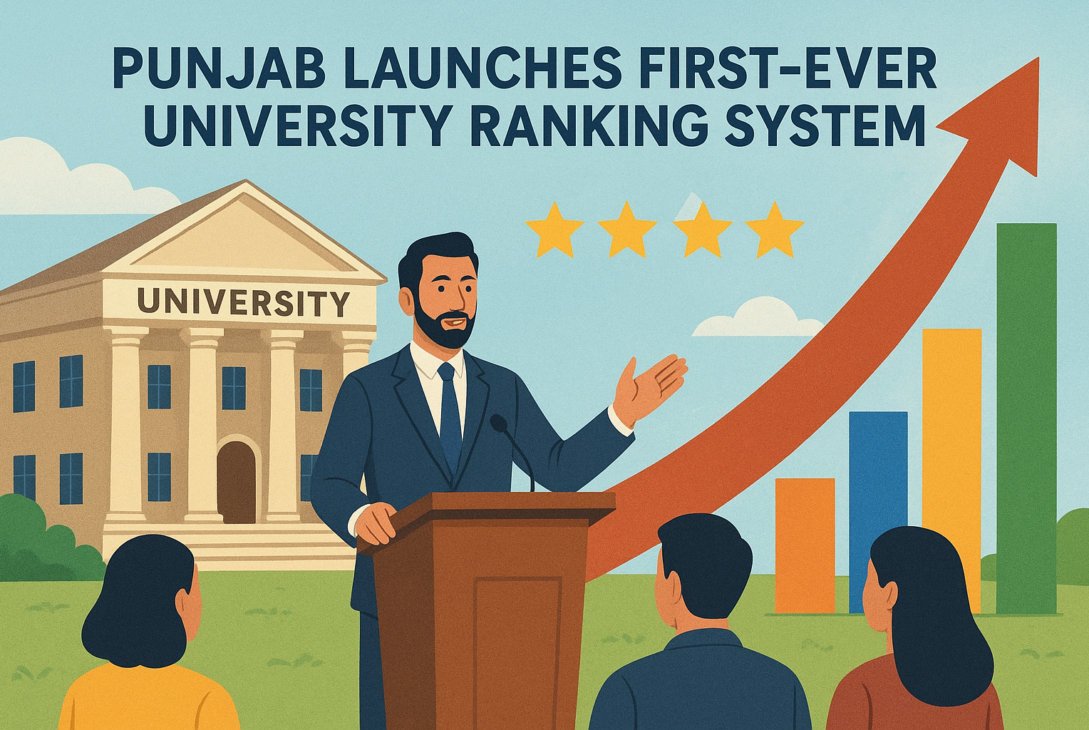In a bold move to elevate the quality of higher education, the Punjab government in Pakistan has announced the launch of its inaugural university ranking system. This initiative, set to evaluate over 60 public and private universities, promises to foster competition, transparency, and excellence in academia. As someone passionate about educational advancements, I see this as a game-changer for students, educators, and policymakers alike. Let’s dive into what this means, how it will work, and why it’s a step forward for Pakistan’s higher education landscape.
Why Punjab Needs a University Ranking System
Higher education in Punjab has seen significant growth over the past decade, with institutions sprouting up to meet the demands of a young, ambitious population. However, challenges like inconsistent quality standards, funding disparities, and lack of accountability have hindered progress. University rankings have long been a global tool to address these issues, and Punjab is now joining the ranks of regions that prioritize data-driven evaluations.
Historically, Pakistan’s higher education has relied on national bodies like the Higher Education Commission (HEC) for oversight, but provincial-level initiatives have been sparse. This new system fills that gap by focusing specifically on Punjab’s unique educational ecosystem. According to recent reports, the province hosts some of the country’s top universities, yet there’s no standardized way to measure their performance against each other. This ranking will change that, providing a benchmark for improvement.
Key drivers behind this decision include:
- Promoting healthy competition among institutions to innovate in teaching, research, and infrastructure.
- Guiding funding allocations based on merit rather than politics.
- Enhancing transparency so students can make informed choices about where to study.
By introducing this system, Punjab aims to align its universities with international standards, potentially attracting more foreign students and collaborations.
Details of the Punjab University Ranking Initiative
The Punjab government has greenlit this project with an estimated budget of Rs. 50 million. The Planning and Development (P&D) department has already completed the PC-1 (project concept) document, and initial approvals are underway. Once implemented, the ranking will become an annual affair, ensuring continuous monitoring and updates.
Over 60 universities—both public and private—will be assessed using a comprehensive set of performance indicators. While exact criteria haven’t been fully disclosed yet, sources suggest they will draw from global best practices. Expect evaluations based on:
- Academic reputation: Faculty qualifications, research output, and publication metrics.
- Student outcomes: Graduation rates, employability, and alumni success.
- Infrastructure and resources: Library facilities, labs, and digital learning tools.
- Research and innovation: Patents filed, grants received, and industry partnerships.
- Inclusivity and diversity: Gender balance, accessibility for underrepresented groups, and international student ratios.
The top 10 institutions will be highlighted, but the full list will be public, allowing all universities to see where they stand and how to improve. This isn’t just a one-off event; it’s designed to influence policy, with high performers potentially receiving priority in government funding and grants.
A government spokesperson emphasized that the goal is to “promote educational excellence and healthy competition.” This echoes sentiments from global ranking systems like QS World University Rankings or Times Higher Education, which have transformed higher education worldwide.
How the Ranking System Will Be Developed and Implemented
Developing a robust ranking mechanism isn’t simple—it requires expertise, data integrity, and stakeholder buy-in. Punjab’s approach involves collaborating with education experts, possibly including consultants from HEC or international bodies. The Rs. 50 million budget will cover software development, data collection tools, and training for evaluators.
Steps in the implementation process:
- Data collection: Universities will submit self-reported data, verified through audits and third-party checks.
- Indicator weighting: Each criterion will be assigned a weight (e.g., 40% for research, 30% for teaching quality).
- Evaluation and scoring: An independent panel or AI-assisted tools might be used for objectivity.
- Annual updates: Rankings will be refreshed yearly, incorporating feedback and new data.
- Public release: Results will be published on a dedicated portal, accessible to all.
To ensure fairness, the system will account for differences between public and private institutions, such as funding sources and enrollment sizes. This phased rollout starts with pilot testing on a smaller group of universities before full-scale launch.
For tech enthusiasts, this could involve integrating blockchain for data transparency or AI algorithms for predictive analytics—though details are pending. Imagine a dashboard where students can filter rankings by fields like engineering or medicine, making career decisions easier.
Benefits for Students, Universities, and the Economy
The introduction of this ranking system isn’t just bureaucratic—it’s poised to deliver tangible benefits across the board.
For students:
- Informed choices: No more relying on word-of-mouth; rankings provide objective insights into program quality.
- Better employability: Top-ranked universities often correlate with higher job placement rates.
- Scholarship opportunities: High-performing institutions may attract more funding for student aid.
For universities:
- Incentive to improve: Low rankings could spur investments in faculty training and research facilities.
- Global recognition: Aligning with international standards might boost partnerships with overseas universities.
- Resource optimization: Data from rankings can highlight inefficiencies, like underused labs or outdated curricula.
For the economy:
- A stronger higher education sector means a skilled workforce, driving innovation in sectors like IT, agriculture, and manufacturing—key to Punjab’s economy.
- Attracting international talent could increase foreign exchange through tuition and collaborations.
Consider the ripple effects: If Punjab’s universities climb global rankings, it could inspire similar systems in other provinces like Sindh or Khyber Pakhtunkhwa, creating a nationwide push for excellence.
Potential Challenges and Criticisms
No initiative is without hurdles. Critics argue that rankings can oversimplify complex institutions, favoring those with more resources. For instance, private universities might excel in infrastructure but lag in accessibility for low-income students.
Common challenges include:
- Data accuracy: Ensuring submissions are honest and verifiable.
- Bias in indicators: Overemphasizing research might disadvantage teaching-focused colleges.
- Implementation costs: Rs. 50 million is a start, but sustaining annual evaluations could strain budgets.
- Resistance from institutions: Lower-ranked universities might challenge the methodology.
To mitigate these, the government should involve university representatives in criteria development and allow appeals processes. Drawing lessons from established systems, like how India’s NIRF (National Institutional Ranking Framework) evolved, could help Punjab avoid pitfalls.
External links for deeper reading: Check out the Higher Education Commission of Pakistan’s official site for national guidelines, or read about global rankings on QS World University Rankings.
Internally, if you’re following our blog, revisit our piece on “How Technology is Revolutionizing Education in Pakistan” for related insights.
Future Implications for Higher Education in Pakistan
Looking ahead, this ranking system could be a catalyst for broader reforms. Imagine integrating it with digital platforms for real-time updates or using big data to predict trends in enrollment and research. As Pakistan pushes towards a knowledge-based economy, initiatives like this align with Vision 2025 goals.
In the long term, top-ranked Punjab universities might feature in international lists, enhancing Pakistan’s global image. This could also encourage private investment in education tech, from online learning platforms to AI-driven assessment tools.
Conclusion
Punjab’s first-ever university ranking system is more than a policy announcement—it’s a commitment to elevating higher education standards. By evaluating over 60 institutions annually, it promises transparency, competition, and excellence that benefit everyone involved. As we await the full rollout, this initiative sets a precedent for other provinces and underscores the importance of data in education.
















